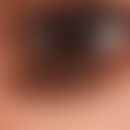HistoryThis section has been translated automatically.
General definitionThis section has been translated automatically.
Potentially human pathogenic yeast fungus (shoot). C. albicans reproduces primarily by sprouting, but can also form hyphae and pseudohyphae (dimorphism). C. albicans is a human commensal (gastrointestinal tract; vagina). Morphologically, the step from the commensal to the pathogenic phase is characterized by the transition from the yeast to the mycelium phase.
On standard media, the Candida species show the typical growth behaviour after 1-4 days with the formation of white cream-coloured or red colonies with a matt shiny surface and a typical, intensive "smell of yeast".
You might also be interested in
PathogenThis section has been translated automatically.
Virulence factors of Candida albicans.
- Colonization - short regeneration times - broad pH and temperature range - adherence to epithelium (mannoproteins).
- Tissue invasion, lytic enzymes, formation of suitable morphological structures(germ tubes; pseudomycelium): Candida albicans forms proteinases especially secretory aspartate proteases (SAP's), phopholipases and lysophospholipases with hydrolytic properties. These enzymes enable the enzymatic digestion of the tissue. Furthermore, Candida albicans is capable of producing toxins; a cytolytic peptide toxin called Candidalysin has been demonstrated. Candidalysin forms holes on the membrane of host cells and destroys them in this way (Moyes d et al. 2016).
- Tissue persistence "phenotypic switch", "antigenic mimicry" = masking with endogenous structures.
Occurrence/EpidemiologyThis section has been translated automatically.
Clinical pictureThis section has been translated automatically.
MicroscopyThis section has been translated automatically.
Hyphae and pseudohyphae (may be missing depending on the growing medium). Germination tube formation, pseudomyzel.
Round, unicellular blastoconidia along the hyphae and especially on septa.
Chlamydospores: Round to oval, mostly terminal (less often intercalary), thick-walled, size: 6-17 μm Ø.
Notice! Differentiation of Candida albicans is done on rice agar (incubation time up to one week at room temperature)! C. albicans develops chlamydospores on this agar.
Note(s)This section has been translated automatically.
Known and defined allergens for Candida albicans are:
- Cand a 1 alcohol dehydrogenase
- Cand a 3 peroxysomal protein
LiteratureThis section has been translated automatically.
- Korting HC, Schaller M (2001) New developments in medical mycology. dermatologist 52: 91-97
- Moyes DL et al (2016) Candidalysin is a fungal peptide toxin critical for mucosal infection. Nature 532:64-8.
- Seebacher C (1999) Candida in dermatology. Mycoses 42: S63-S67
- Snydman DR (2003) Shifting patterns in the epidemiology of nosocomial Candida infections. Chest 123: 500S-503S
- von Langenbeck BRC (1839) Detection of fungi on the mucous membrane of the esophagus of a typhoid cadaver. In: New note Geb Natur-u. Heilkunde
Incoming links (13)
Bronchitis acute; Candida; Candida balanitis; Candida glabrata; Candidiasis vulvovaginale; Candidosis, congenital cutaneous; Candidosis, interdigital; Candidosis intertriginous; Geotrichum candidum; Hamamelidis folium; ... Show allDisclaimer
Please ask your physician for a reliable diagnosis. This website is only meant as a reference.











